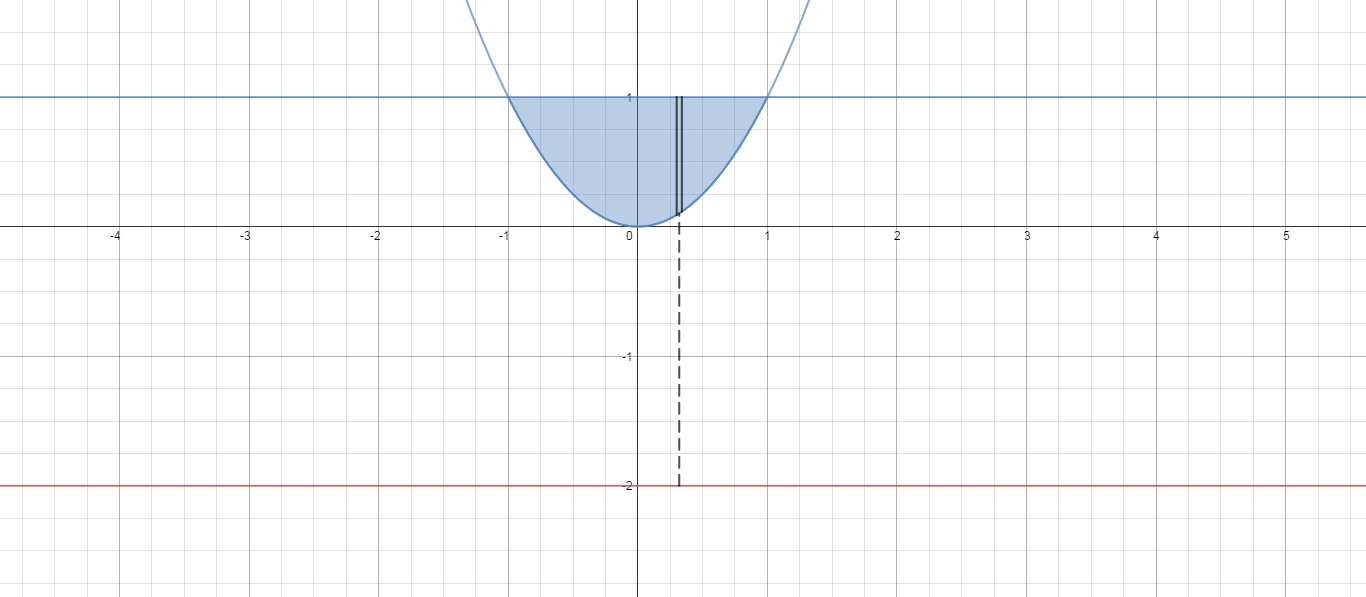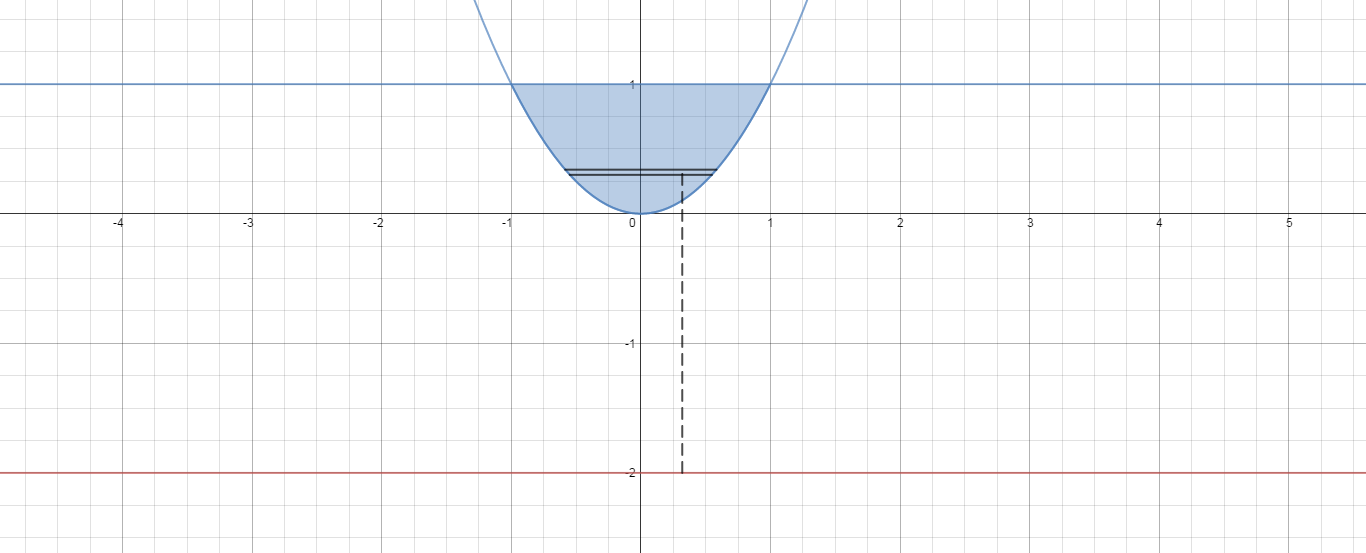How do you find the volume of the solid generated by revolving the region bounded by the curves y = x² and y =1 rotated about the y=-2?
1 Answer
See the explanation below.
Explanation:
Here is a picture of the region and a vertical slice.

The picture is set up to use washers (disks).
Thickness is
the radius of the larger washer is the greater
the radius of the smaller washer is the lesser
The representative slice has volume
We need to evaluate the integral
=10415π
Shells Method
If we had taken a slice horizontally:

This is set up to use cylindrical shells of thickness
The volume of each shell is
In the region, the
The radius of the representative shell is
The height goes from the greater
We need to rewrite the boundary as functions of
The representative shell has volume
The solid has volume
=4π(2615)=10415π

